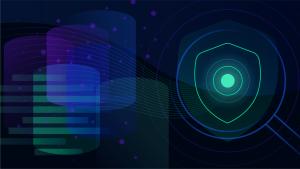Infrastructure monitoring is the process of collecting critical data about your IT environment, including information about availability, performance, and resource efficiency. The goal? Reducing downtime, improving user experience, speed, reliability, and flexibility, and ensuring IT investments are delivering on promised ROI across local IT stacks and in the cloud.
The challenge? Getting adequate insight into an increasingly complex and dynamic landscape. Between multicloud environments, container-based architecture, and on-premises infrastructure running everything from the latest open-source technologies to legacy software, achieving situational awareness of your IT environment is getting harder to achieve. Many organizations respond by adding a proliferation of infrastructure monitoring tools, which in many cases, just adds to the noise.
To keep pace with innovation and deliver great user experiences at ever-increasing rates of reliability, speed, and scale, IT operations (ITOps) teams need to mature their approach to infrastructure monitoring.
Why ITOps needs to work smarter, not harder
Cloud services, mobile applications, and microservices-based application environments offer unparalleled flexibility for developers and users. The Cloud Native Computing Foundation (CNCF) paints a fast-growing landscape of nearly 1000 cloud-native technologies, and most organizations use many of them. However, this variety and flexibility also create numerous complexity concerns for ITOps teams. The result is a production paradox: with each new cloud service, container environment, and open-source solution, the number of technologies and dependencies increases, which makes it more difficult for ITOps teams to actively monitor systems at scale and address performance problems as they emerge.
To get ahead of this ever-expanding diversity and complexity, ITOps teams need to work smarter, not harder. Leveraging artificial intelligence and continuous automation is the most promising path—to evolve from ITOps to AIOps. Artificial intelligence for IT operations (AIOps) is the discipline of applying artificial intelligence, typically machine learning and pattern recognition—or in the case of Dynatrace, deterministic, causation-based AI—to perform and automate tasks an ITOps team normally performs manually.
Achieving AIOps may seem daunting, but with some planning, teams can implement this evolution in three phases: 1. Evaluate monitoring maturity and goals; 2. Automate infrastructure monitoring; 3. Integrate monitoring on a single AIOps platform.
1. Evaluate infrastructure monitoring maturity and goals
Effective monitoring and diagnostics starts with availability monitoring. But as Gartner notes, most organizations are on a journey to increase both the maturity of their monitoring and its impact. Gartner defines five maturity stages organizations can use to evaluate where they are and where they want to go:
Stage 1: Availability monitoring
This stage is defined by the question “is it up?” and focuses on the ability to collect and correlate events to assess the availability of key services. While this basic information is essential, it provides no insight into the root causes of anomalies or the specific remedies required to resolve, let alone prevent, disruptions.
Stage 2: Service monitoring
The service monitoring stage digs deeper to ask, “is it working?” Here, collecting metrics and monitoring performance help evaluate the efficacy of services rather than simply identifying their state.
Stage 3: Diagnostics
Stage three tackles a bigger question: “What’s the problem?” Dependency mapping, distributed tracing and root-cause analysis (RCA) operations all play a role in identifying what’s gone wrong, why, and what’s required to fix it.
Stage 4: Business insights
With basic operational needs well in hand, stage four focuses on customer journeys and KPIs to answer key questions: How is the performance of the monitored apps and services affecting end users? And what impact is this having on business?
Stage 5: Self-driving solutions
The final stage defines continual optimization and improvement through intelligent automation. This stage of maturity integrates the goals of the previous stages through automation and AI-assisted observability—automatic instrumentation and baselining of dynamic systems, reliable root cause analysis, and auto-remediation workflows—to enhance operational outcomes and prevent issues that can cause disruption.
Worth noting? Recent survey data from Gartner found that half the companies surveyed identified their monitoring operations as stage 2 or below, indicating that for most, monitoring maturity is a work in progress.
2. Automate infrastructure monitoring
Armed with an understanding of their monitoring maturity, organizations can develop a strategy for harnessing their data to automate more of their operations. Such a strategy relies on the ability to implement three capabilities:
End-to-end observability across a broad spectrum of technologies
The first requirement toward automating monitoring is comprehensive observability across the network. This includes all infrastructure layers (networks, hosts, virtualizations, and so on); cloud-native and on-premises environments (including mainframes); and open-source observability frameworks, such as StatsD, Telegraf, Prometheus, and OpenTelemetry.
Automation at every stage of the software delivery life cycle (SDLC)
Automating the entire data life cycle requires the ability to instrument tens of thousands of hosts, including highly dynamic and ephemeral function as a service (FaaS) components. It also requires performance baselining for anomaly detection and precise root-cause analysis, which relies not only on metrics, logs, and traces, but the context of each transaction, including user data.
Automated problem resolution
Automating proactive problem resolution requires intelligence, system optimization, and user experience data to facilitate an understanding of the context and business impact of each transaction. To deliver precise root-cause analysis, AI should be a core component of the monitoring solution. To trigger remediation workflows automatically, system health and anomaly data must be precise and reliable.
3. Integrate infrastructure monitoring on a single AIOps platform
As organizations evolve to embrace Kubernetes and cloud-native architectures, many have also adopted a host of monitoring point solutions—specialized monitoring tools that capture specific metrics of their application environment. With telemetry from many different sources, it can be difficult for teams to have a holistic view of their apps and dependencies. A single integrated observability platform can enable collaboration among operations, development, security, and business teams so they can easily coordinate and make decisions and automate more processes based on the same data.
This platform approach does not require that teams eliminate their point solutions. Rather for teams to adopt a single platform that can ingest data from any point solution in any environment, from legacy software in on-premises infrastructure to microservices-based apps in cloud environments. As different teams have implemented point-solution infrastructure monitoring tools across different disciplines, having a single platform to integrate their data and its context enables them to gain new insights so they can spend more time innovating.
Out-of-the-box AIOps
As organizations adopt more technologies in their evolving multicloud networks, infrastructure monitoring has become much more complex. To keep up with the demands on IT teams, deliver on customer expectations, and achieve business goals, digital teams must also transform how they work. Key to this transformation is adopting end-to-end observability across a broad spectrum of technologies, automating every stage of the SDLC, and automating problem resolution. Adopting an integrated observability platform like Dynatrace enables collaboration among operations, development, security, and business teams.
The Dynatrace Software Intelligence platform is a self-driving AIOps solution that delivers automation and AI-assisted observability for infrastructure monitoring, applications and microservices, application security, digital experience, and business analytics use cases in hybrid and multicloud environments.
The Dynatrace deterministic AI engine, Davis, automatically serves up precise answers, prioritized by business impact. To help organizations achieve AIOps out-of-the-box, Dynatrace combines automatic instrumentation and baselining of dynamic systems with automatic root cause analysis and auto-remediation workflows. Instead of infrastructure monitoring tool sprawl, Dynatrace’s platform approach integrates data from disparate monitoring point solutions, enabling teams to easily coordinate and automate responses.




Looking for answers?
Start a new discussion or ask for help in our Q&A forum.
Go to forum